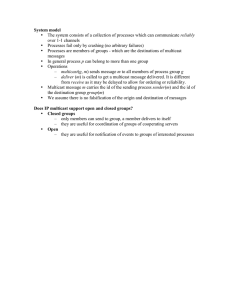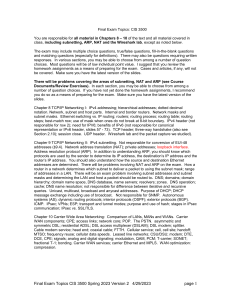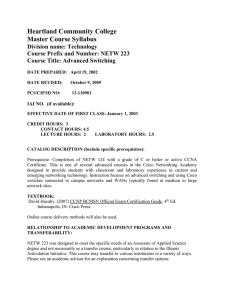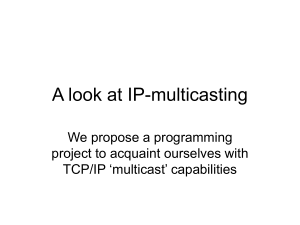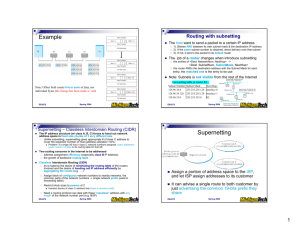Chapter 10
advertisement
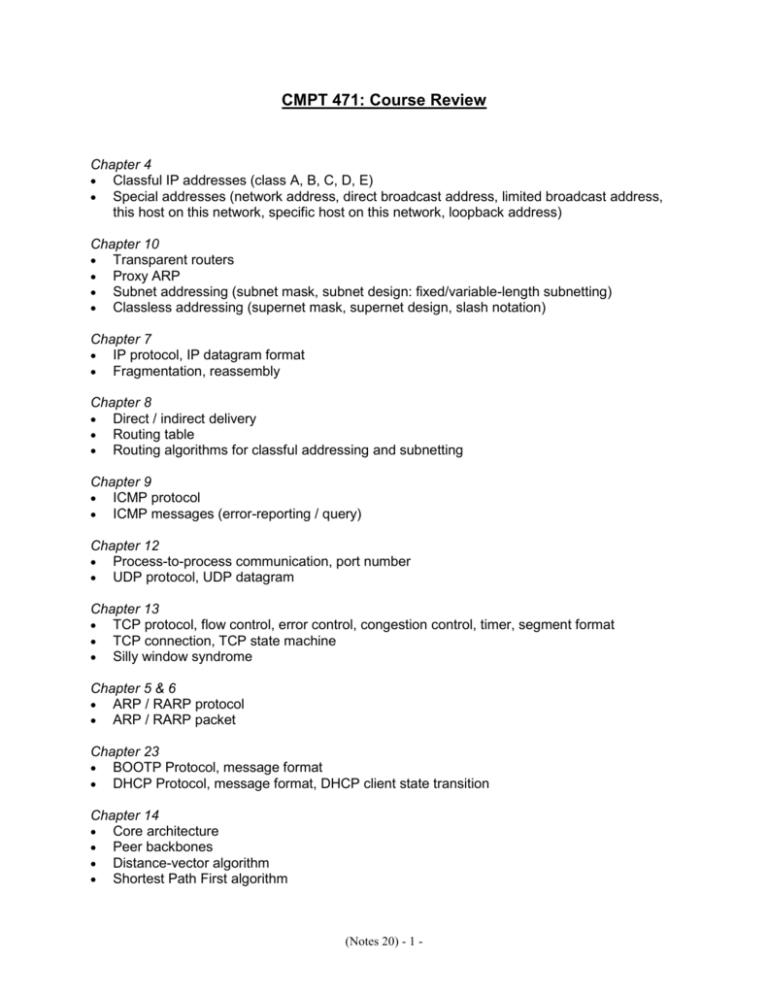
CMPT 471: Course Review Chapter 4 Classful IP addresses (class A, B, C, D, E) Special addresses (network address, direct broadcast address, limited broadcast address, this host on this network, specific host on this network, loopback address) Chapter 10 Transparent routers Proxy ARP Subnet addressing (subnet mask, subnet design: fixed/variable-length subnetting) Classless addressing (supernet mask, supernet design, slash notation) Chapter 7 IP protocol, IP datagram format Fragmentation, reassembly Chapter 8 Direct / indirect delivery Routing table Routing algorithms for classful addressing and subnetting Chapter 9 ICMP protocol ICMP messages (error-reporting / query) Chapter 12 Process-to-process communication, port number UDP protocol, UDP datagram Chapter 13 TCP protocol, flow control, error control, congestion control, timer, segment format TCP connection, TCP state machine Silly window syndrome Chapter 5 & 6 ARP / RARP protocol ARP / RARP packet Chapter 23 BOOTP Protocol, message format DHCP Protocol, message format, DHCP client state transition Chapter 14 Core architecture Peer backbones Distance-vector algorithm Shortest Path First algorithm (Notes 20) - 1 - Chapter 15 Autonomous system BGP protocol BGP messages Chapter 16 Interior gateway protocol RIP protocol, problems (routing loop, slow convergence, instability), messages HELLO protocol OSPF protocol (area, link, messages) Chapter 17 Unicast, multicast & broadcast comparison IP multicast & Ethernet multicast, mapping IP multicast to Ethernet multicast IGMP protocol, messages, operation (joining / leaving a group, membership monitoring), group membership state transitions Multicast routing (multicast tree, DVMRP, MOSPF, PIM-DM, PIM-SM, CBT) Chapter 21 & 24 Client-server model Name space, Internet domain names, distribution of name space Domain name system (name-address resolution, DNS messages, DNS configuration in Linux) Chapter 25 Local & remote login comparison TELNET protocol (NVT, default / character / line mode, option negotiation) Chapter 26 FTP protocol (process model, control / data transfer connection, FTP commands, FTP reply, anonymous FTP) TFTP protocol (messages, connection, port assignment, flow control, error control, sorcerer’s apprentice bug) Chapter 27 Email system model (UA, MTA, spool, mailbox, email address, alias) SMTP protocol (command, response, mail transfer) MIME extension, MIME header Mail access protocols (POP3, IMAP4) ** This document is aimed to give an overview on the major content of each chapter. It gives NO indication about what may or may not be included in the final exam ** The final exam will cover the chapters 3~10, 12~17, 21, 23~27 (Notes 20) - 2 -
